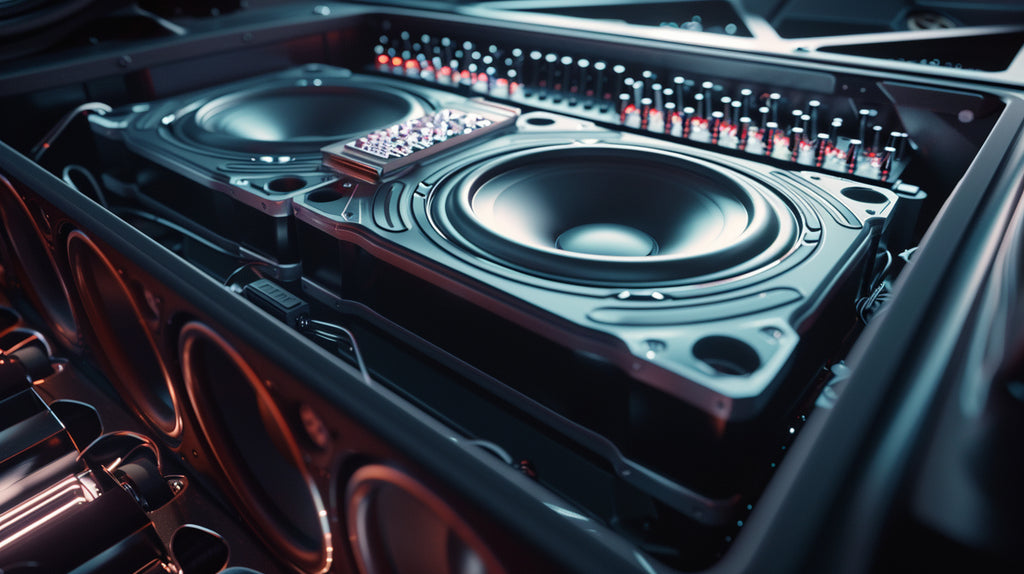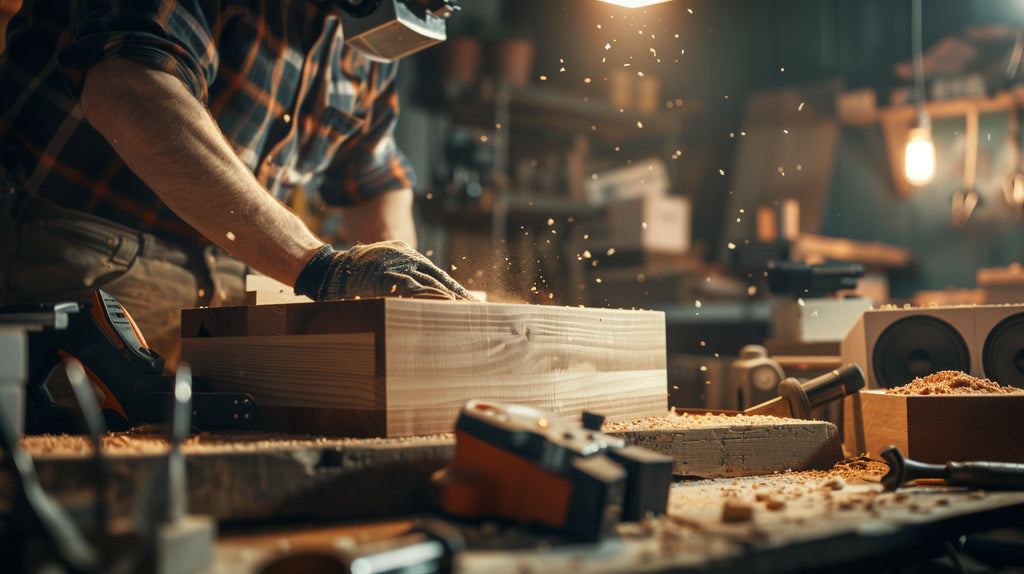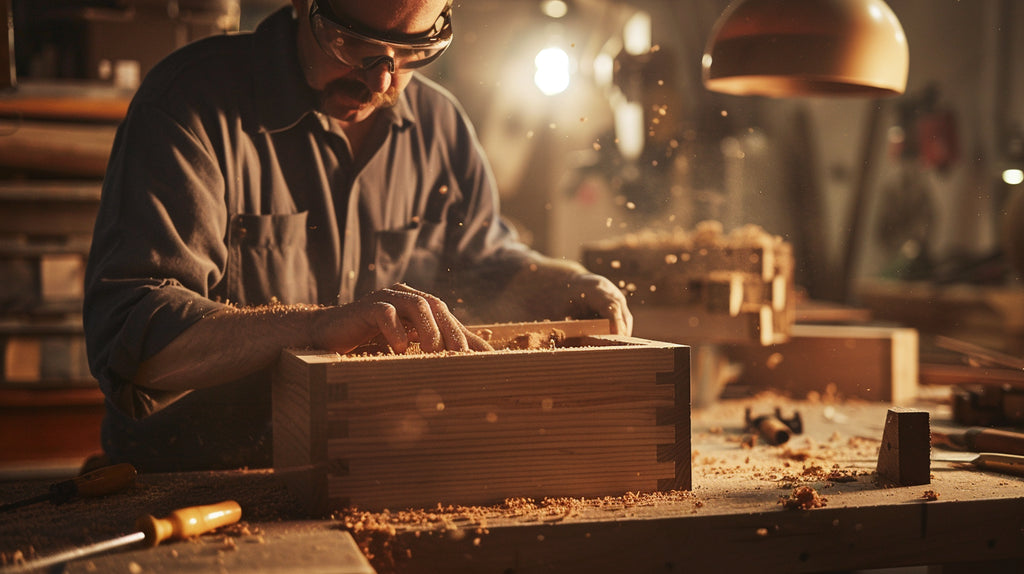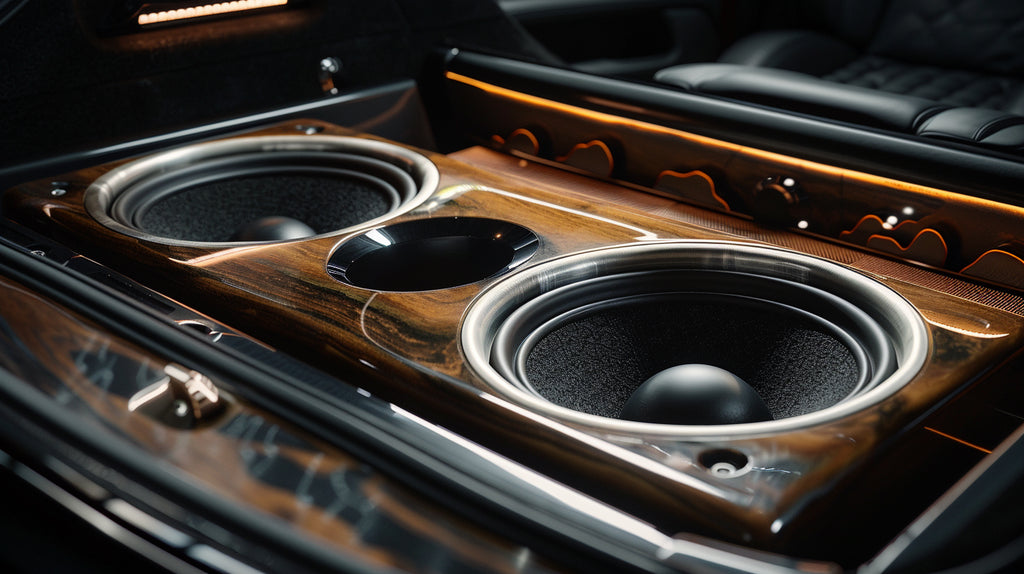
Custom Subwoofer Boxes for Car Audio Systems
Key Highlights
- Custom subwoofer boxes maximize the performance of your car audio system, delivering high-quality sound and deep bass.
- These boxes are built to fit your specific subwoofer perfectly, ensuring optimal sound reproduction and minimizing vibrations and distortions.
- With their high-quality construction and innovative designs, custom subwoofer boxes provide extreme sound quality and enhance your listening experience.
- Whether you're a car audio enthusiast or simply looking to upgrade your sound system, custom subwoofer boxes are a must-have for achieving that dream system.
- Investing in a custom subwoofer box is worth it, as it guarantees the best sound performance and allows you to enjoy your favorite music to the fullest.
Introduction
Custom subwoofer boxes are the ultimate solution for car audio enthusiasts looking to enhance their sound system's performance. These boxes are designed to house subwoofers and optimize their performance, delivering high-quality sound and deep bass. If you're tired of the mediocre sound quality and lackluster bass from your factory-installed car speakers, it's time to consider investing in a custom subwoofer box.
A subwoofer enclosure, also known as a sub-box, is designed to hold a subwoofer and enhance its sound reproduction. Custom subwoofer boxes are tailored to fit your specific subwoofer, ensuring a perfect fit and optimal sound performance. Combined with a high-quality subwoofer, these boxes can transform your car audio system, delivering extreme sound quality and a deep, punchy bass.
Understanding Custom Subwoofer Boxes

A custom subwoofer box is a specialized enclosure designed to house a subwoofer and maximize its performance. These boxes are built to specific dimensions to accommodate the chosen subwoofer perfectly, ensuring optimal sound reproduction. Custom subwoofer boxes are typically made from high-quality materials like MDF (Medium Density Fiberboard) or birch plywood. They are designed precisely to eliminate unwanted vibrations and resonances, resulting in cleaner and more accurate sound reproduction. Investing in a custom subwoofer box is essential for any car audio enthusiast looking to achieve the best possible sound quality in their vehicle.
The Basics of Subwoofer Boxes
Subwoofer boxes, also known as subwoofer enclosures, play a crucial role in enhancing the performance of subwoofers. These enclosures are designed to provide the subwoofer with a sealed or ported environment, optimizing its sound output. There are various subwoofer boxes, including sealed, ported, and bandpass boxes.
Sealed boxes are a popular choice for achieving accurate and tight bass reproduction. These airtight boxes provide a controlled environment for the subwoofer, resulting in precise sound reproduction. Ported boxes, on the other hand, have a vent or port that allows air to escape, enhancing the bass response and overall efficiency of the subwoofer. Bandpass boxes combine sealed and ported enclosures, offering a wide range of sound frequencies and high sound output. Choosing the correct type of subwoofer box depends on your specific audio preferences and the characteristics of your subwoofer.
Types of Subwoofer Boxes: Sealed vs. Ported vs. Bandpass
There are three subwoofer boxes: sealed, ported, and bandpass boxes. Each type has benefits and considerations, depending on your desired sound output and bass response.
- Sealed boxes: These boxes provide tight and accurate bass reproduction. They are airtight and do not have any ports or vents, resulting in controlled and precise bass. Sealed boxes are ideal for those who prefer accurate sound reproduction and are not looking for booming bass.
Ported boxes: Also known as vented or bass reflex boxes, ported boxes have a vent or port that allows air to escape, enhancing the bass response and overall efficiency of the subwoofer. Ported boxes provide more boom and volume than sealed boxes, making them suitable for those who enjoy deep and powerful bass.
- Bandpass boxes: Bandpass boxes are a combination of sealed and ported enclosures. They have two chambers: one sealed and one ported. The sealed chamber filters the sound frequencies before passing them to the ported chamber, resulting in a wide range of sound frequencies and high sound output. Bandpass boxes are ideal for those who want maximum bass output and loudness.
When choosing a subwoofer box, consider your subwoofer's size and power handling capabilities, as well as your desired sound output and bass response.
Benefits of Custom Subwoofer Boxes in Car Audio Systems

Custom subwoofer boxes offer numerous benefits for car audio systems, making them a worthwhile investment for any audio enthusiast. Here are some key benefits:
- Perfect fit: Custom subwoofer boxes are designed to fit your specific subwoofer, ensuring a perfect fit and optimal sound reproduction. This eliminates wasted space and allows the subwoofer to perform at best.
- High performance: Custom subwoofer boxes are built to maximize the performance of your subwoofer. They are designed precisely to eliminate unwanted vibrations and resonances, resulting in cleaner and more accurate sound reproduction.
- Enhanced sound quality: By providing the subwoofer with a proper enclosure, custom subwoofer boxes prevent sound waves from canceling each other out, resulting in improved sound quality. The tight and controlled bass reproduction adds depth and richness to your audio experience.
Brand compatibility: Many custom subwoofer boxes are designed for popular brands like JL Audio, ensuring optimal performance and compatibility.
When upgrading your car audio system, investing in a custom subwoofer box is a must to achieve high performance and exceptional sound quality.
Designing Your Custom Subwoofer Box

Designing a custom subwoofer box involves several key considerations to ensure optimal performance and sound quality. Here are some factors to keep in mind when designing your custom subwoofer box:
- Subwoofer specifications: Start by considering the specifications of your subwoofer, such as its size, power handling capabilities, and recommended enclosure type. These specifications will help determine your subwoofer's appropriate box size and type.
- Enclosure type: Choose between a sealed, ported, or bandpass box based on your desired sound output and bass response.
- Box dimensions: Calculate the internal volume and dimensions of the box based on your subwoofer's specifications and the chosen enclosure type. This can be done using online calculators or software specifically designed for subwoofer box design.
- Material choice: Select a high-quality material, such as MDF (Medium Density Fiberboard), for constructing your custom subwoofer box. MDF is commonly used due to its durability and acoustic properties.
By considering these factors and designing your custom subwoofer box, you can ensure optimal performance and sound quality from your car audio system.
Choosing the Right Material for Your Subwoofer Box
Choosing the suitable material for your subwoofer box is crucial for ensuring its durability and sound quality. The most commonly used material for subwoofer boxes is MDF (Medium Density Fiberboard). Here's why MDF is the preferred choice:
- Durability: MDF is a dense and robust material that can withstand the vibrations and stresses encountered in car audio environments. It resists warping and provides a sturdy structure for your subwoofer.
- Acoustic properties: MDF has excellent acoustic properties, making it an ideal material for subwoofer boxes. It helps absorb and dampen unwanted vibrations and resonances, producing cleaner and more accurate sound reproduction.
- Thick triple baffle design: A thick triple baffle design is often used in custom subwoofer boxes to enhance their structural integrity further and minimize vibrations. This design involves using multiple layers of MDF for the front baffle, providing additional strength and reducing the chances of panel flexing.
- Charcoal carpet: To improve the appearance and provide a protective covering for the subwoofer box, charcoal carpet is commonly used. This carpeting enhances the aesthetics and adds an extra layer of insulation and protection.
You can ensure a durable and acoustically optimized subwoofer box by choosing MDF and incorporating a thick triple baffle design and charcoal carpeting.
Calculating Volume
Calculating the volume and dimensions of your subwoofer box is crucial for achieving optimal sound performance. Here are the steps to calculate the volume and dimensions:
- Determine the required internal volume: Refer to your subwoofer's specifications for the recommended enclosure type and required internal volume. The manufacturer usually provides this information.
- Choose the enclosure type: Based on the subwoofer's recommendations and your desired sound output, choose between a sealed box, ported box, or bandpass box.
- Calculate the box dimensions: Use an online calculator or subwoofer box design software to calculate the box dimensions based on the recommended internal volume. Enter the desired thickness of the material you'll use for the box walls.
- Consider any additional space required for bracing or other internal components.
By accurately calculating the volume and dimensions of your subwoofer box, you can ensure that it provides the optimal environment for your subwoofer to produce deep and accurate bass.
Tools and Equipment Needed
If you plan to build a DIY subwoofer box, you'll need some essential tools and equipment to complete the job. Here's a list of the tools and equipment you'll need:
- Measuring tape: To accurately measure the dimensions of your subwoofer box.
- Circular saw or jigsaw: Cut the panels of the subwoofer box to the desired dimensions.
- Router: Optional but valuable for creating rounded edges or flush mounting the subwoofer.
- Screwdriver or drill: For assembling the subwoofer box panels.
- Wood glue: To strengthen the joints and increase the overall rigidity of the box.
- Clamps: To hold the panels in place while the glue dries.
- Speaker wire: For connecting the subwoofer to your car audio system.
- Amplifier: To provide the necessary power to your subwoofer.
- Subwoofer: Choose a high-quality subwoofer from reputable brands like JBL, Alpine, or Kicker based on your audio preferences and power requirements.
With these tools and equipment, you'll be well-prepared to build your DIY subwoofer box and enjoy the satisfaction of a custom-built audio solution.
Step-by-Step Guide to Building a Custom Subwoofer Box

Building a custom subwoofer box allows you to tailor it to your needs and preferences. Here's a step-by-step guide to building your custom subwoofer box:
- Prepare your materials and workspace: Gather all the necessary tools and equipment. Set up a clean and organized workspace.
- Cut and assemble the box panels: Measure and cut the panels to the desired dimensions. Assemble the panels using wood glue and screws. Secure the joints with clamps.
- Install the subwoofer and seal the box: Install the subwoofer into the box, ensuring a tight and secure fit. Seal any gaps or openings to prevent air leaks.
- Connect the subwoofer to your sound system: Wire the subwoofer to your amplifier using the appropriate speaker wire.
- Test and tune the system: Connect your audio source and amplifier. Adjust the settings to achieve the desired sound quality and bass response.
Following these steps, you can build your custom subwoofer box and enjoy a personalized audio experience in your car.
Preparing Your Materials
Before starting the construction of your custom subwoofer box, it's essential to prepare your materials and workspace. Here's what you'll need to do:
- Gather your materials: Make sure you have all the necessary materials, including MDF or birch plywood for the box panels, screws, wood glue, clamps, speaker wire, and carpet for the box exterior.
- Set up your workspace: Choose a clean, well-lit area. Clear any clutter and ensure enough space to assemble the subwoofer box comfortably.
- Organize your tools: Gather all the required tools, such as a measuring tape, circular saw or jigsaw, router, screwdriver or drill, and any other tools specific to your design.
By adequately preparing your materials and workspace, you'll have everything you need to efficiently build your custom subwoofer box and achieve optimal sound performance.
Cutting and Assembling the Box Panels
Once you have gathered your materials and prepared your workspace, it's time to start cutting and assembling the box panels for your custom subwoofer box. Here's how:
- Measure and mark the dimensions: Use a measuring tape to measure each panel's dimensions accurately. Mark the measurements on the MDF or birch plywood panels.
- Cut the panels: Use a circular saw or jigsaw to cut along the marked lines. Take your time and ensure clean and precise cuts.
- Assemble the panels: Apply wood glue to the edges of the panels and join them together. Use clamps to hold the panels in place while the glue dries. Screw the panels together for added strength and stability.
- Reinforce the joints: Consider adding additional bracing or corner blocks to reinforce the joints, if desired.
By carefully cutting and assembling the box panels, you'll create a sturdy, well-constructed subwoofer box that provides optimal sound performance.
Installing the Subwoofer and Sealing the Box
After the box panels are assembled, installing the subwoofer and sealing the box is time. Here's how:
- Mark the subwoofer mounting hole: Place the subwoofer on the box's front panel and trace around its outer edge. Use a jigsaw to cut out the mounting hole carefully.
- Install the subwoofer: Place the subwoofer into the mounting hole and secure it using the provided screws or mounting brackets. Ensure a tight and secure fit.
- Seal the box: Inspect the box for gaps or openings and seal them using silicone caulk or weatherstripping. This will prevent air leaks and ensure optimal sound reproduction.
- Test the subwoofer: Connect it to your car audio system to ensure it works correctly. Adjust the settings to achieve the desired sound quality and bass response.
By adequately installing the subwoofer and sealing the box, you'll create an airtight enclosure that allows the subwoofer to perform at its best and deliver deep and accurate bass.
Enhancing Car Audio with Custom Subwoofer Boxes

Custom subwoofer boxes are a game-changer when it comes to enhancing the audio experience in your car. Here's how they can elevate your car audio system:
- Extreme sound: Custom subwoofer boxes provide deep and powerful bass, adding a new dimension to your music. They enhance the overall sound quality, making your favorite songs more affluent and immersive.
- Subwoofer enclosure: By providing a dedicated and optimized space for your subwoofer, custom subwoofer boxes eliminate unwanted vibrations and resonances, resulting in cleaner and more accurate sound reproduction.
- Perfect fit: Custom subwoofer boxes are designed to fit your specific subwoofer perfectly, ensuring optimal performance and minimizing vibrations and distortions.
Upgrade your car audio system with a custom subwoofer box and experience the thrill of extreme sound and deep bass.
By carefully tuning your subwoofer box, you can achieve maximum performance and enjoy the best possible sound quality from your car audio system.
Integrating the Subwoofer Box into Your Car Audio System
Integrating the subwoofer box into your car audio system is crucial for achieving optimal sound performance and balance. Here's how to seamlessly integrate the subwoofer box:
- Please choose the suitable amplifier: Select an amplifier that matches the power handling capabilities of your subwoofer, ensuring that it provides enough power to make the subwoofer perform at its best.
- Connect the subwoofer to the amplifier: Use a high-quality speaker wire to connect the subwoofer to the amplifier. Ensure a secure and tight connection.
- Adjust the amplifier settings: Fine-tune the amplifier settings, such as gain, crossover, and bass boost, to match the characteristics of your subwoofer and achieve the desired sound output.
- Balance the sound: Experiment with the overall sound balance by adjusting the volume levels of your car's speakers and the subwoofer. Aim for a well-balanced sound that blends seamlessly.
Integrating the subwoofer box into your car audio system allows you to achieve a cohesive and immersive audio experience with powerful bass and high-quality sound.
Maintenance Tips for Custom Subwoofer Boxes
To ensure the longevity and optimal performance of your custom subwoofer box, it's essential to follow these maintenance tips:
- Regular inspection: Check the box for any signs of damage or wear periodically. Inspect the joints, screws, and sealing to ensure everything is intact.
- Cleanliness: Keep the subwoofer box clean by regularly dusting it and removing any debris or dirt that may accumulate on the exterior or interior.
- Proper storage: If you need to remove the subwoofer box from your car, store it in a cool and dry place to avoid any moisture buildup or damage.
- Avoid excessive heat or moisture: Protect the subwoofer box from extreme temperatures and excessive moisture, as these can damage the materials and affect the performance.
Regularly maintaining your custom subwoofer box can extend its lifespan and allow you to enjoy long-lasting, high-performance sound in your car.
Innovative Designs and Their Acoustic Benefits
Innovative designs in custom subwoofer boxes can offer significant acoustic benefits, enhancing the sound quality and overall audio experience. Here are a few examples:
- Transmission line design: This design uses a long, folded internal path to control the air movement and optimize bass response. It reduces unwanted resonances and improves the linearity of sound reproduction.
- Horn-loaded design: Horn-loaded subwoofer boxes use a flared shape to amplify the sound waves acoustically. This design maximizes the efficiency and output of the subwoofer, resulting in a powerful and extended low-frequency response.
Isobaric design: Isobaric subwoofer boxes utilize two subwoofers coupled together and facing each other. This design reduces the overall box size while maintaining high-performance bass output.
By exploring these innovative designs, you can further enhance your custom subwoofer box's performance and sound quality.
How to Get Inspired for Your Next Project
If you're looking to embark on your next custom subwoofer box project, here are a few ways to get inspired:
- Online forums and communities: Participate in car audio and online communities to connect with other enthusiasts and gather inspiration from their projects.
- Manufacturer websites: Explore the websites of subwoofer and car audio equipment manufacturers. They often showcase customer installations and provide design ideas.
- Car audio events and competitions: Attend car audio and competitions to see the innovative and creative subwoofer box designs firsthand.
- Professional installations: Visit local car audio shops or attend car audio shows to see professionally installed subwoofer boxes. These installations can serve as a source of inspiration for your project.
By immersing yourself in the car audio community and exploring various sources of inspiration, you can spark new ideas and create a custom subwoofer box that meets your unique audio needs.
Conclusion
In conclusion, custom subwoofer boxes can significantly enhance your car audio experience by optimizing sound quality and bass performance. Understanding the basics, choosing the suitable materials, and following a step-by-step guide for construction are crucial steps in designing a custom subwoofer box. You can achieve an immersive listening environment by tuning the box for maximum performance and integrating it seamlessly into your car audio system. Remember to maintain your custom subwoofer box regularly for long-lasting enjoyment. Explore innovative designs and seek inspiration for your next project to elevate your car audio system to new heights.
Frequently Asked Questions

What Is the Best Type of Subwoofer Box for Deep Bass?
The best type of subwoofer box for deep bass depends on your specific audio preferences and the characteristics of your subwoofer. Sealed boxes provide accurate and tight bass, while ported and bandpass boxes offer more boom and volume.
Can Custom Subwoofer Boxes Improve Overall Sound Quality?
Yes, custom subwoofer boxes can significantly improve overall sound quality. They provide a dedicated and optimized environment for the subwoofer, reducing unwanted vibrations and resonances and resulting in cleaner and more accurate sound reproduction.
How Much Does It Cost to Build a Custom Subwoofer Box?
The cost of building a custom subwoofer box can vary depending on the design's size, material, and complexity. On average, the cost can range from $100 to $500 or more, including materials and tools.
How Can I Measure My Car for the Perfect Subwoofer Box Fit?
To measure your car for the perfect subwoofer box fit, measure the available space in your vehicle's trunk or cargo area. Take accurate measurements of the length, width, and height, considering any obstructions or irregularities. These measurements will help determine the optimal size and shape of the subwoofer box.
Do I Need Special Tools to Build a Subwoofer Box?
While you don't necessarily need specialized tools, some essential tools are required to build a subwoofer box, such as a measuring tape, circular saw or jigsaw, router, screwdriver or drill, clamps, and wood glue. These tools will help you accurately measure, cut, and assemble the box panels.
Can I Use Any Wood for a Subwoofer Box?
While you can use various types of wood for a subwoofer box, the most commonly used materials are MDF (Medium Density Fiberboard) and birch plywood. These materials offer the durability, strength, and acoustic properties required for optimal subwoofer performance.
How Long Does It Take to Build a Custom Subwoofer Box?
The time it takes to build a custom subwoofer box depends on factors such as the complexity of the design, the availability of tools and materials, and the builder's experience. On average, it can take a few hours to several days to complete the construction.
Where Can I Find More Information on Custom Subwoofer Box Design?
For further information on custom subwoofer box design, explore detailed guides online, consult car audio forums, visit specialized audio shops, or attend car audio events and workshops. Engage with enthusiasts and professionals for insights and inspiration.
















